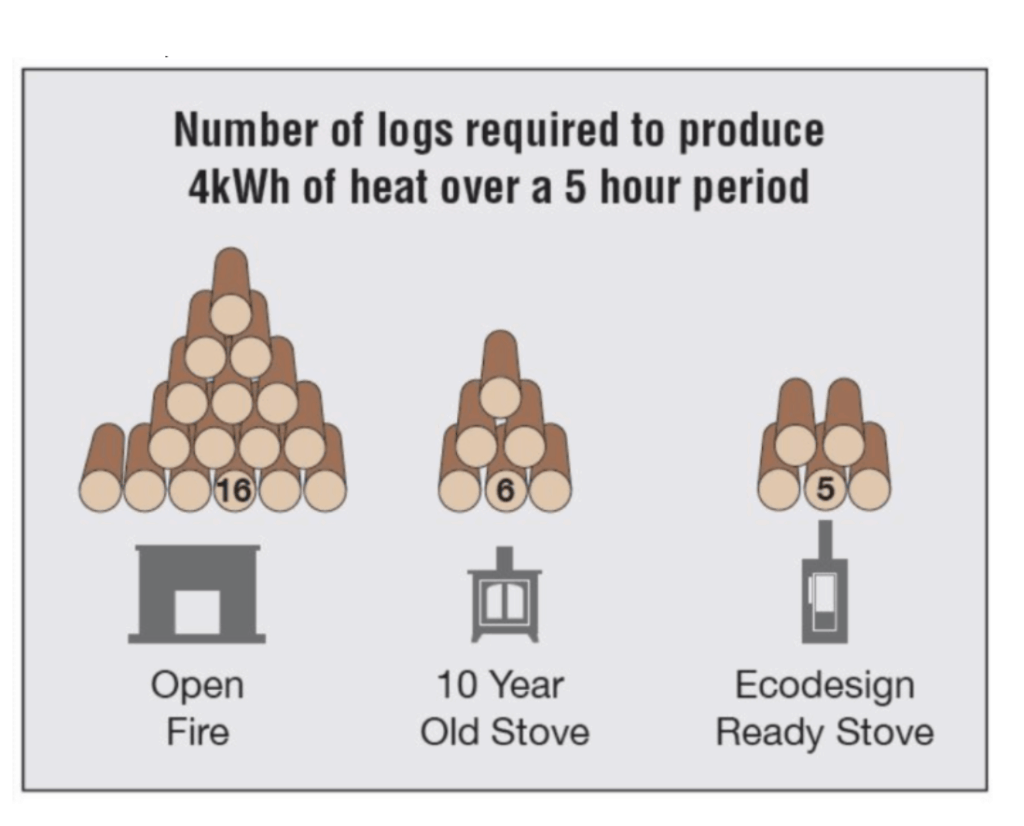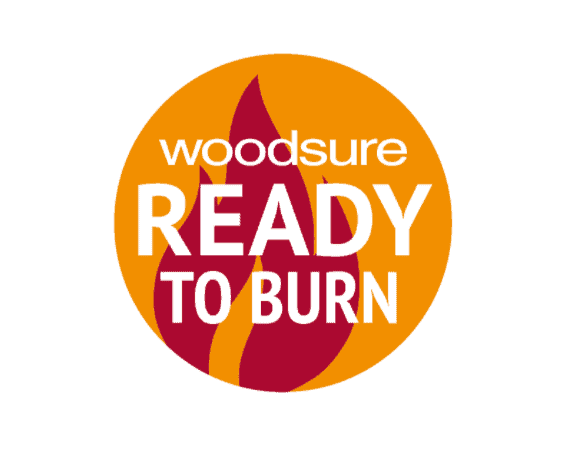All our stoves are Ecodesign Ready. They have been designed to make sure they are incredibly efficient. An open fire has an efficiency level of around 20%. In comparison, an Ecodesign Ready stove has an efficiency level of around 80%. We need to be doing everything we can to lower our carbon footprint and increasing appliance efficiency one direct way we can do this.
The diagram below explains the efficiency of an Ecodesign Ready stove vs an open fire.

While an Ecodesign Ready stove is designed for maximum efficiency, there are things you need to be aware of, to make sure you are maximising the potential of your stove.
Here are a few pointers to help you:
Refuelling your fire – Place the logs into the centre of the fire, away from the rear, sides and glass. By doing this you are helping keep the glass and the liners clean. Make sure you use your stove gloves when opening the door and when adding wood and adjusting the controls.
The RIGHT Wood – Hardwood logs are the best for a fire. Their moisture content is critical too. The moisture levels should be no more than 20%. Too higher moisture (know as wet wood) will create an inefficient burn and increase the levels of tar in a flue, which in turn can increase the risks of a chimney fire and carbon monoxide poisoning. Equally a moisture level, which is too low is also bad news – as the wood will often burn too quickly. Look for Woodsure “Ready to Burn” quality assured wood. From May 2021 all wood for sale under 2m3 need to be labelled as “Ready to Burn” – it’s the law. This assurance scheme is to help unsuspecting buyers avoid purchasing “wet” wood.

Fuels NOT to use on your stove:
House Coal – The sale of traditional house coal (also known as bituminous coal) will be banned in England from 1st May 2023. Anthracite coal, semi-anthracite coal and low volatile steam coal will still be available for sale.
Smokeless Coal/Briquettes – Over time the chemicals in the smokeless coal and briquettes can discolour the fire and can cause a range of other problems, as a result, it’s highly recommended that you avoid these fuel sources.
Painted or preserved woods – Burning such wood can release very toxic chemicals into the atmosphere, which are a direct threat to air quality. Also, the chemicals can also damage and discolour the inside of your fireplace. Avoid at all costs.
Newspaper and card – Paper and card burn very quickly and can easily float up the chimney (when lit) and ignite creosote/tar currently residing in a flue, possibly causing a fire. Burning both should be avoided.
Storing Firewood:
You should store firewood in well vented dry areas, that is well away from the rain. Stacking firewood is good because it helps promote air circulation. The last thing you want is to buy correctly seasoned wood only to trap in dampness!
Discover our range of wood-burning stoves.







